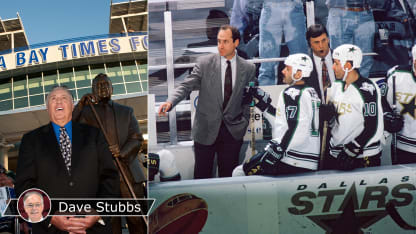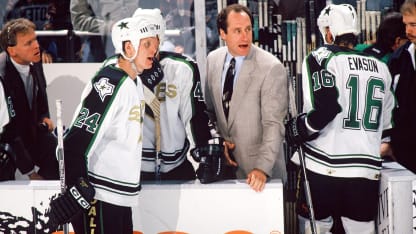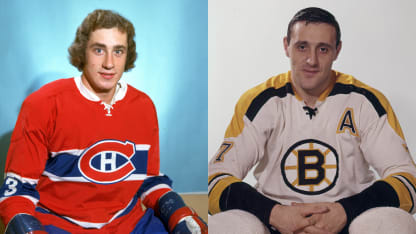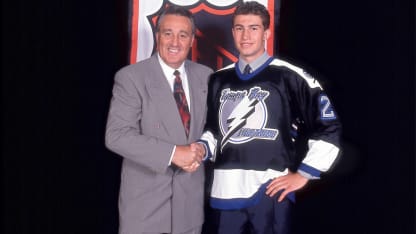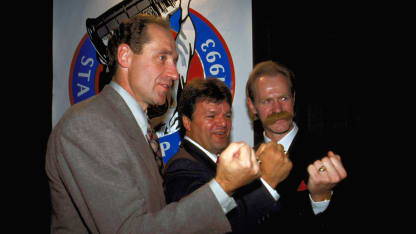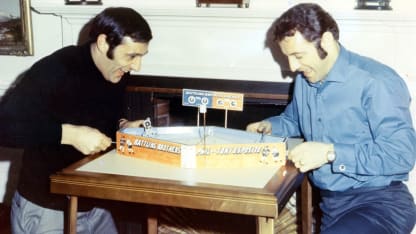Bob Gainey (left) and Phil Esposito early in their NHL careers.
As they now pull for their respective sides, Gainey, 66, and Esposito, 78, take great pride in the roles they played in building the Stars and Lightning, cherishing memories of importing the NHL into non-traditional hockey markets.
Gainey was coach and GM of the North Stars when the team moved south to begin the 1993-94 season, having coached and managed the team in Minnesota after cutting his coaching teeth in France in 1989-90, diving in immediately upon his NHL retirement as a player.
If Texas had a rich minor pro hockey history dating to the 1940s, the NHL would be a different product, one that hoped to share a crowded stage dominated by the NFL's Dallas Cowboys, baseball's Texas Rangers and the NBA's Dallas Mavericks.
"It was an unknown for me and for many of us who were involved," Gainey said of the move. "We learned quickly more than 25 years ago that Dallas is a very avid sports-minded community. And people came to our games. The business community gave us a chance. They said, 'This is a new entity, why not? This could be good.' It took a lot of work by the parts of the organization that were trying to establish ticket and sponsorship sales. But eventually we got there, and we had a very, very good relationship with the community."
Esposito, who was GM of the Rangers from 1986-89, had been feeling out the expansion process in the early 1990s when then-NHL President John Ziegler told him to stay away from Texas. Esposito had his eye on Florida anyway, and believed that the North Stars might be headed to Houston, his goaltending brother Tony's final minor-pro stop on his way to the NHL.
